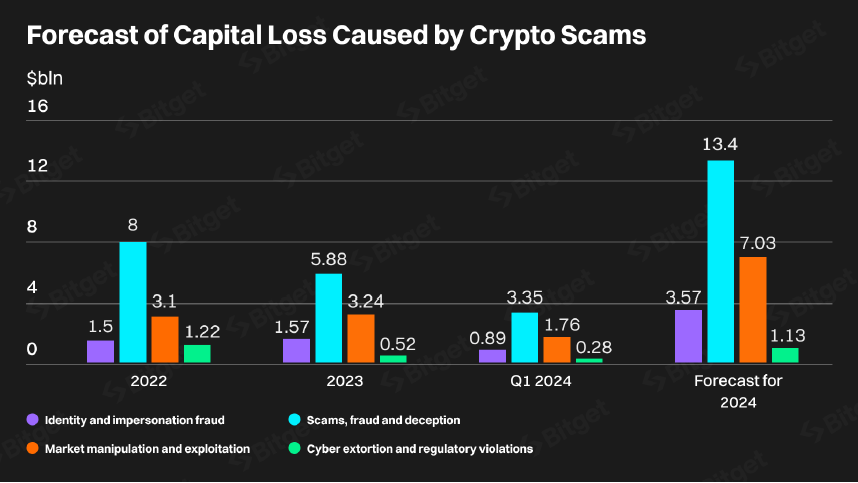Coinspeaker
Crypto Investors Can Lose $25B to Deep Fakes in 2024, Says Bitget
As per the latest report from Bitget Research, crypto investors hold the risk of losing $25 billion this year to deep fake scams and risks. As per the June 27 report, Bitget highlights a massive 245% surge in the number of deep fakes worldwide, so far in 2024.
During the first quarter of this year, China, the USA, Vietnam, Germany, Ukraine, and the UK had the most deep fakes detected. Simultaneously, the crypto industry saw a 217% jump in deep fakes in comparison to Q1 2023.
As per the research team at Bitget, this surge in deep fakes led to $6.3 billion in crypto losses during the first quarter. The crypto exchange states that these losses can further increase to $10 billion by 2025.
“Deepfakes are moving into the crypto sector in force, and there is little we can do to stop them without proper education and awareness,” Bitget CEO Gracy Chen said in a statement.
-
Photo: Bitget Research
- The interesting thing is that deep fake fraudsters have been employing the same tactics over the years.
Most crypto losses to deep fakes occur through fake projects, phishing attacks, and Ponzi schemes, where deep fake technology is employed to deceive cryptocurrency investors. In the past two years, these methods have accounted for over half of all deep fake-related crypto losses. Bitget Research noted:
“By impersonating influential figures, these schemes create the illusion of credibility and substantial project capitalization, thereby receiving large investments from victims without thorough due diligence.”
No bonus points for guessing, deep fraudsters have been targeting MicroStrategy executive chairman Michael Saylor. Earlier this year in January, Saylor and his team managed to remove 80 artificial intelligence (AI)-generated fae videos of him.
Deep Fakes Can Contribute to 70% of Crypto Crimes
Biutget predicts that without proper combat measures in place, deep fakes can contribute to 70% of crypto crimes by 2030. Bitget Research chief analyst Ryan Lee said:
“Criminals are increasingly employing fake photos, videos, and audio to exert a stronger influence over their victims. For instance, a video impersonating someone close to the victim could be pivotal for fraudsters, whereas a fake video of an influencer might bolster investor confidence in a scam project as an ancillary tool.”
Lee identifies a significant immediate concern with deep fake technology: AI-backed voice impersonators, which enable scammers to call users pretending to be their relatives and request money. Additionally, deep fakes can be used to bypass Know Your Customer (KYC) measures, allowing unauthorized access to a user’s funds.
Crypto Investors Can Lose $25B to Deep Fakes in 2024, Says Bitget




